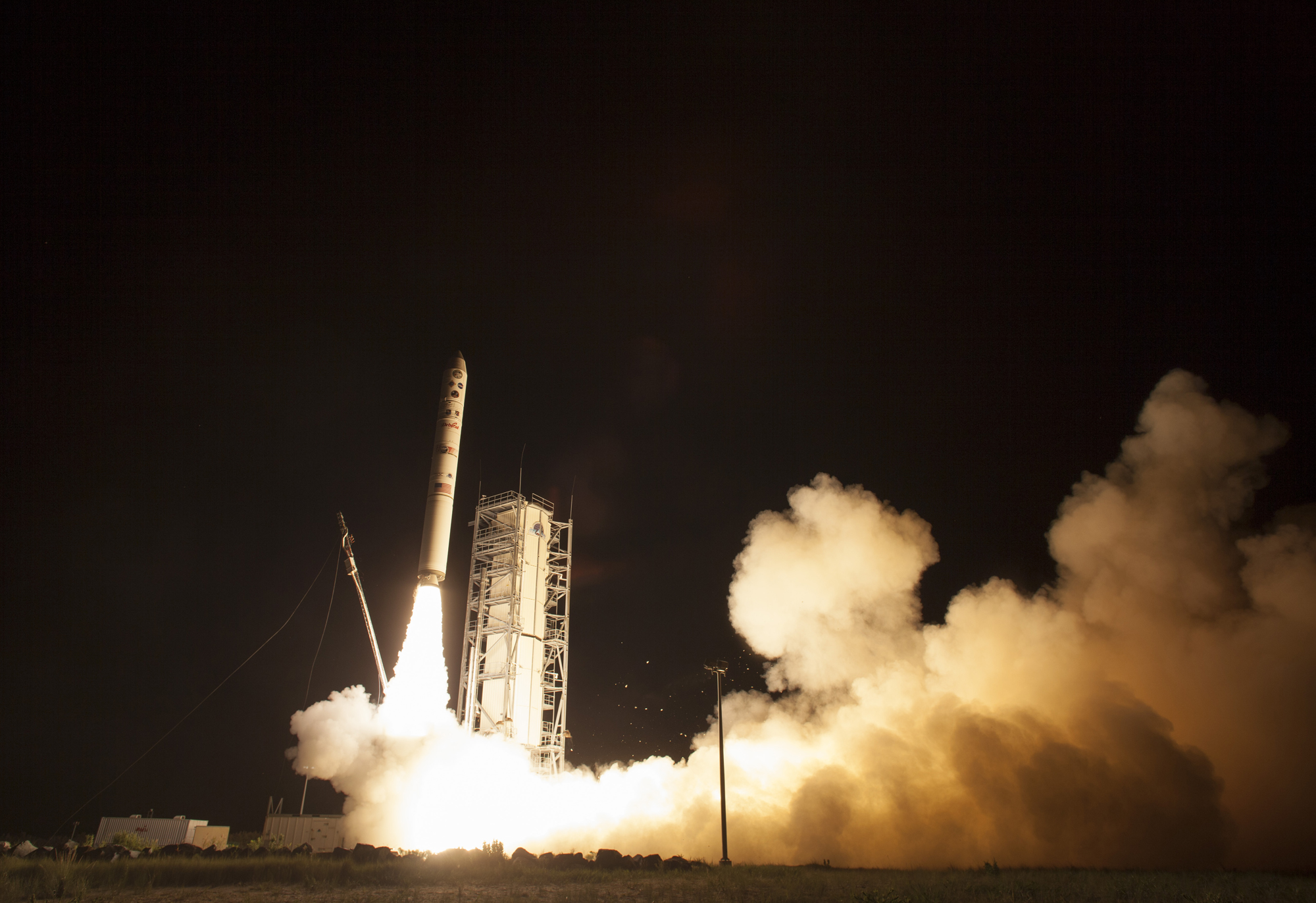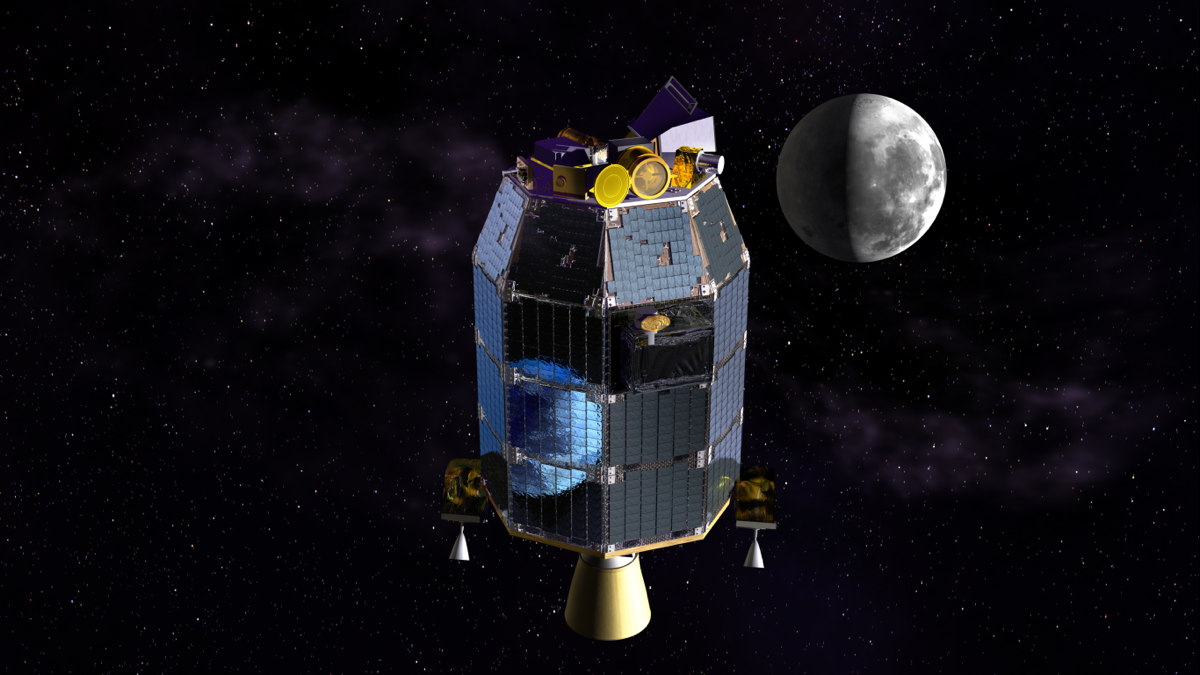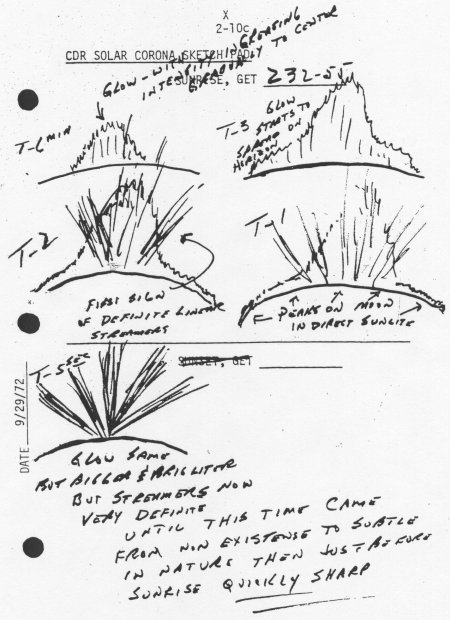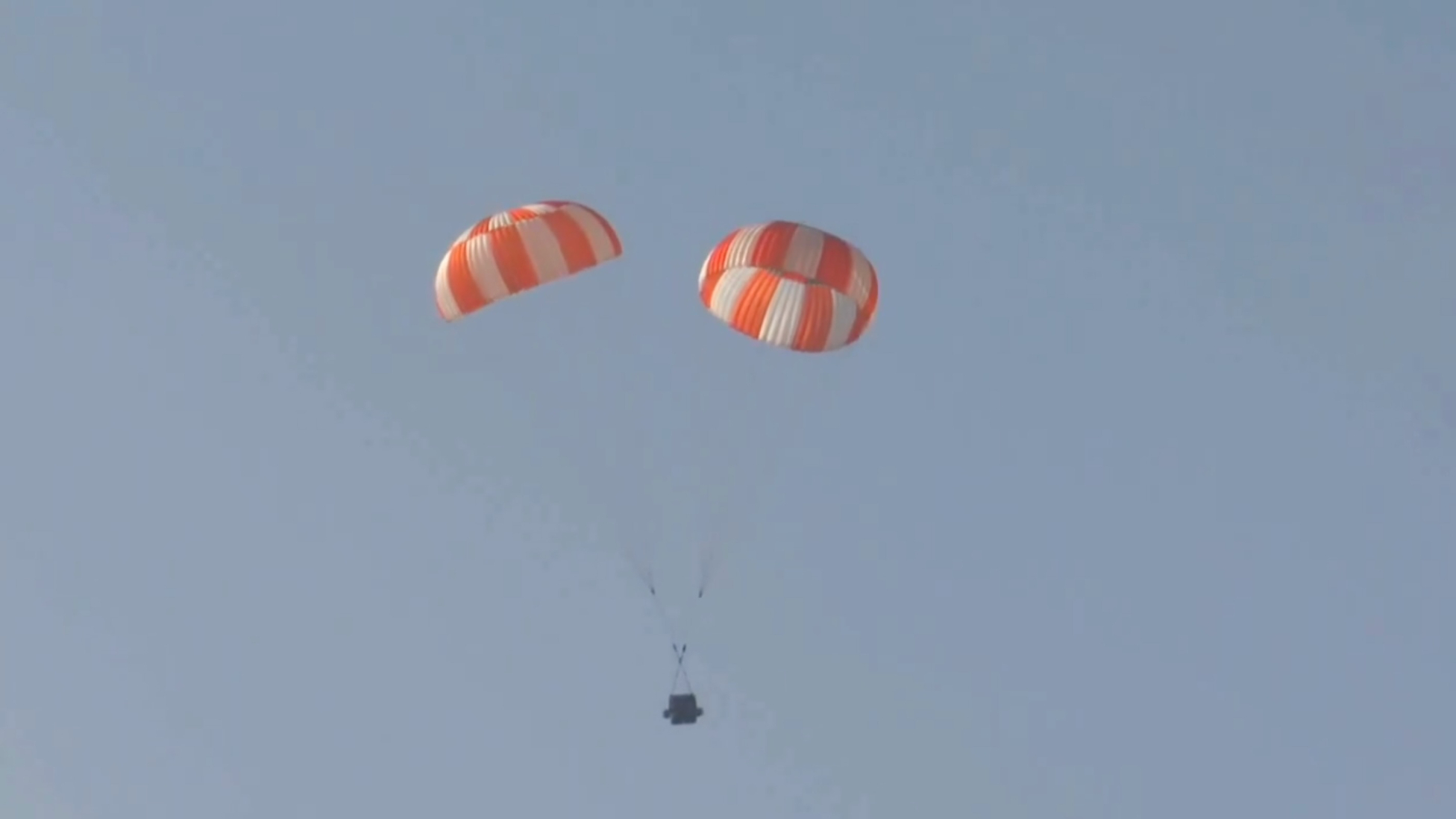Liftoff! NASA Moon Probe Launches from Va. to Hunt 40-Year Lunar Mystery

WALLOPS ISLAND, Va. — NASA began a new trek to the moon Friday night with a dazzling launch from Virginia that sent a spacecraft soaring toward Earth's nearest neighbor to probe the thin lunar atmosphere and, just maybe, solve a 40-year space mystery.
The spacecraft, called the Lunar Atmosphere and Dust Environment Explorer (LADEE for short), launched into space Friday, Sept. 6, at 11:27 p.m. EDT (0327 Sept. 7 GMT) atop a Minotaur V rocket. It marked the first moon shot from Virginia and the maiden voyage of the Minotaur V rocket — space firsts witnessed by thousands of spectators who watched the launch soar from NASA's Wallops Flight Facility here.
"Godspeed on your journey to the moon, LADEE," a launch controller said as the spacecraft began its mission. [Launch Photos: NASA's LADEE Lunar Mission Soars to the Moon]
LADEE (pronounced "laddie") took flight from NASA's Wallops Flight Facility, which hosted about 1,100 people in its visitor's center alone in honor of the launch. The center sold LADEE-themed Moon Pies, the marshmallow and graham cracker snack, to celebrate the lunar liftoff.
"I'm extremely excited," Rick Elphic, LADEE project scientist told SPACE.com before launch. "It's been five years watching this thing develop … It's a solid spacecraft. It tested out completely perfectly, and we've shaken it. We've baked it. We've frozen it. We put it through vacuum testing and it works like a charm… This is where the adventure changes from building the spacecraft to flying it to the moon and doing cool stuff."
"It's the little spacecraft that could," Elphic added. "We're really hoping to do big science with a little spacecraft."
LADEE's Minotaur V rocket lit up the night sky like an artificial sun as it soared into space. The launch was visible across a wide swath of the U.S. East Coast, including Washington, D.C., New Jersey and elsewhere. From West Orange, N.J., the rocket looked like a bright red-orange flame streaking toward space to SPACE.com managing editor Tariq Malik. The transition between the rocket's five stages was clearly visible to spectators on the ground.
Breaking space news, the latest updates on rocket launches, skywatching events and more!
Though the launch was picture-perfect, LADEE ran into a bit of trouble shortly after separating from the Minotaur V. The probe's onboard computer shut down LADEE's orientation-maintaining reaction wheels after noticing that they were drawing too much current. Mission engineers are now trying to work through the LADEE glitch, and NASA officials expressed confidence that the spacecraft will be OK.
"The really important thing is that we have full communications. Everything is healthy onboard the spacecraft," Pete Worden, director of NASA's Ames Research Center in Moffett Field, Calif., which is leading the LADEE mission, said during a post-launch press conference early Saturday morning (Sept. 7). "Everything is working, and the computer did what it was supposed to do."
Probing a moon mystery
The $280 million LADEE moon mission is tasked with digging up the dirt on lunar dust and the moon's atmosphere. The three science instruments on the spacecraft will investigate the moon's extremely thin atmosphere and a moon dust mystery dating back to before the Apollo-era. [How NASA's LADEE Moon Probe Works (Infographic)]
The Surveyor 7 lander, launched in 1968, recorded a glow from the surface of the moon on the horizon before sunrise. NASA's Apollo astronauts also saw the moon glow and scientists think it could be caused by extremely small particles of dust being lofted high into the moon's atmosphere.
"I love this mission because there are so many great things about it," John Grunsfeld, associate administrator for NASA's science mission directorate, told reporters Thursday (Sept. 5). "We've studied the moon extensively since the Apollo astronauts last left over 40 years ago. When we left the moon, we thought of it as an atmosphere-less ancient surface. Since then … we discovered that the moon, scientifically, is still very much alive. It's still evolving. The LADEE mission is going to give us whole new vistas on our nearest neighbor and I'm very excited about that."
LADEE also plays host to a laser communications demonstration. The new test will allow the spacecraft to use laser technology to send data down to mission controllers on the ground possibly at broadband speeds.
Over the course of about the next 30 days, LADEE will orbit Earth in an elliptical orbit three times before moving into lunar orbit. Once in orbit around the moon, the spacecraft will go through a testing phase when the probe's laser communications demonstration will be tested.
After that, the LADEE spacecraft will perform 100 days of science before running out of fuel and crashing into the surface of Earth's closest cosmic neighbor.
Virginia's moon first
LADEE is NASA's first mission to the moon ever launched from Virginia's Eastern Shore. All but one of the agency's other moon missions launched from pads in Cape Canaveral, Fla. Only the agency's Clementine spacecraft, which launched from California's Vandenberg Air Force Base in 1994, flew from a different spaceport.
LADEE launched from Pad 0B of Virginia's Mid-Atlantic Regional Spaceport located at NASA's Wallops Flight Facility. The night launch may even have been visible to millions more spectators along wide swath of the U.S. East Coast that stretched as far north as Maine and as far south as South Carolina, launch officials said.
Wallops was chosen for this launch partially because of a treaty between the United States and Russia, Butler Hine, LADEE project manager said. The first three stages of the five-stage Minotaur V rocket are reconditioned intercontinental ballistic missile (ICBM) motors restricting the booster's launch location possibilities, Hine said.
"The treaty between the U.S. and Russia only allows a few launch sites for the X-ICBMs," Hine said during a news conference in August. "We can launch out of Kodiak, Alaska, or Vandenberg, Calif., or Wallops Island, Va. Those are the three allowed under the treaty. Kodiak, Alaska, and Vandenberg are better for polar Earth orbits but if we want to get to the moon, we need to launch eastward. Wallops Island is the ideal place to launch this launch vehicle to get us to the moon."
The Minotaur V rocket is built by the Dulles, Va.-based commercial spaceflight company Orbital Sciences Corp. It is one of two Orbital Sciences rockets slated to launch this month. The company also plans to launch a larger Antares rocket on Sept. 17 to fly its first unmanned cargo ship to the International Space Station as a test flight ahead of future delivery runs for NASA.
Editor's note: Did you see LADEE and the Minotaur V in the night sky? If you took a photo of the LADEE launch or any other night sky view that you'd like to share for a possible story or image gallery, send photos, comments and your name and location to managing editor Tariq Malik at spacephotos@space.com.
Editor's note 2: This story was updated at 3:57 a.m. EDT on Sept. 7 to include details about the reaction wheel glitch on LADEE that arose shortly after launch.
Follow Miriam Kramer @mirikramer and Google+. Follow us @Spacedotcom, Facebookand Google+. Original article on SPACE.com.

Miriam Kramer joined Space.com as a Staff Writer in December 2012. Since then, she has floated in weightlessness on a zero-gravity flight, felt the pull of 4-Gs in a trainer aircraft and watched rockets soar into space from Florida and Virginia. She also served as Space.com's lead space entertainment reporter, and enjoys all aspects of space news, astronomy and commercial spaceflight. Miriam has also presented space stories during live interviews with Fox News and other TV and radio outlets. She originally hails from Knoxville, Tennessee where she and her family would take trips to dark spots on the outskirts of town to watch meteor showers every year. She loves to travel and one day hopes to see the northern lights in person. Miriam is currently a space reporter with Axios, writing the Axios Space newsletter. You can follow Miriam on Twitter.




